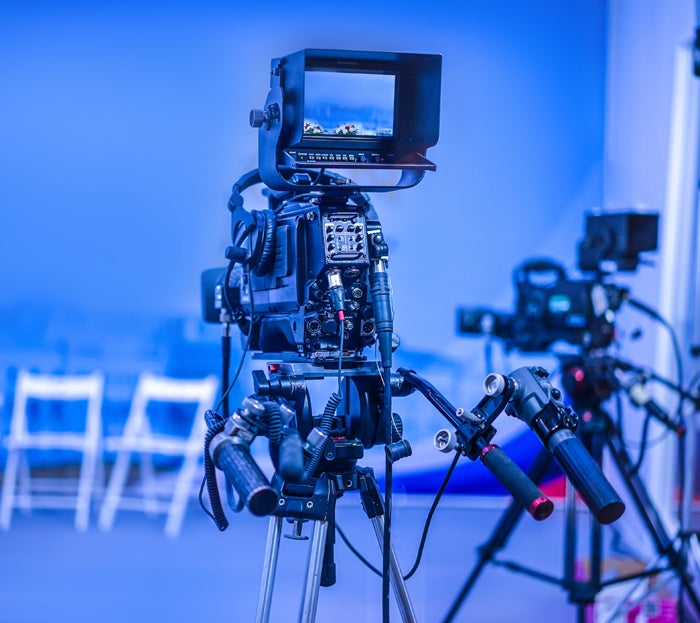The creator marketplace is rapidly embracing livestreaming to bring in bigger bucks.
Smosh, for example, started out 18 years ago as a sketch comedy duo on YouTube. Since then, it has expanded its talent and production teams to monetize content on other social video platforms.
In 2021, Smosh hired its first CEO, Daniel Tibbets, a TV vet who is simultaneously serving as GM of Latino-focused media brand El Rey Network, where he’s been for seven years.
Under Tibbets’s leadership, Smosh is breaking into the livestreaming space, including hiring a bigger talent team that’s experienced in improv. (There’s no editing a livestream.) The comedy group also started working with video tech company Kiswe last year to power its livestreams, airing its fourth show earlier this month.
Although YouTube is still Smosh’s biggest platform in terms of audience size and revenue, live video introduces new revenue opportunities, including online ticket sales and brand sponsorships, Tibbets told AdExchanger.
Brought to you by ads
Live shows aren’t brand new to Smosh, which toured globally before the pandemic. Livestreaming was initially a way to continue live performances despite the lockdown.
Now that most live events have returned, Tibbets said it still makes the most economic sense for Smosh to stick with livestreaming shows because it doesn’t require paying to shuttle a bunch of people across the country.
But there’s another benefit to livestreaming: The ability to attract advertisers.
On YouTube, Smosh relies on a mix of revenue sharing with Google and sponsored brand promotions. Smosh’s livestreams don’t have conventional ad breaks, though, so the group works with brands on both title sponsorships and in-show callouts.
Advertisers will happily open up their wallets to reach a live audience, Tibbets said.
Compared with on-demand viewing, people who make a point to tune in to a show at a specific time are more engaged and therefore more valuable to advertisers. “Appointment viewing is still a premium for advertisers,” he said.
Appointment viewing is not a new idea – it’s the way TV was always done before streaming took over. But online livestreaming helps YouTube creators like Smosh win over high-paying advertisers with a similar promise as TV networks: a live, captive audience.
Plus, the superfans who tune in live also pay at least $20 for access to the streams, which are also available for sale to watch on-demand after the livestream is over. More casual fans have the option of watching other Smosh content on YouTube for free.
Smosh didn’t share how many people watched its most recent livestream this month, but Tibbets said that attendance exceeded projections. Ticket sales for its first livestream last year were 30% higher than expected, and more than one in three fans tuned in to multiple shows, based on Kiswe’s numbers.
Break the chains
A bet on the value of appointment viewing is why Kiswe launched in 2013 as a cloud-based video platform to produce live sports and concerts. It then expanded to include live creator content because social influencers also get high fan engagement from live productions.
Smosh is one of Kiswe’s first clients in the creator ecosystem, said Kiswe CEO Glenn Booth.
Beyond attracting advertisers and boosting ticket sales, livestreaming also allows creators to more closely manage the viewing experience.
Because Kiswe helps clients run livestreams on owned-and-operated platforms, creators have more control over audience data than they would on a third-party website like YouTube.
Kiswe’s dashboard, for example, gives Smosh an organized report of first-party data about its viewers, including which countries ticket buyers reside in. Smosh uses this information to inform its sales projections and marketing strategy.
A proprietary platform also gives influencers more creative freedom than having to adhere to third-party website policies.
Smosh’s first-ever livestream involved the entire cast drunk, for example, which Smosh shied away from on YouTube in case the content was blocked from younger viewers. (Most of Smosh’s fans are Gen Z or millennials.) Kiswe’s technology also shows what fans are saying in a chat box during livestreams, which allows the group to address comments and suggestions in real time.
For Smosh, Tibbets said, livestreaming is the best way to build a one-on-one connection with its fans. “Live [programming] works for Smosh because we have a community of fans that want to watch and be a part of our content in real time.”














